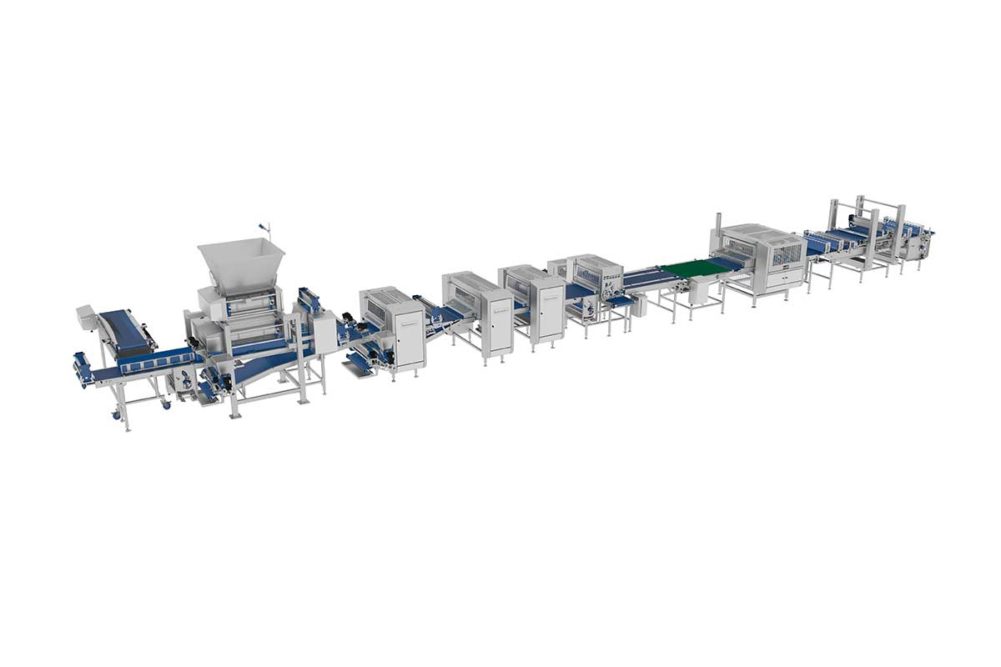
Taking a thoughtful approach to automating artisan bread
When Netflix’s DVDs-by-mail service became all the rage, the baking industry still considered artisan breads an emerging market.
Fast forward from 2000 to a decade ago when streaming came online, and these European-style baked goods had established their foothold in grocery in-store bakeries.
Today, artisan bread and rolls have become an anchor along the supermarket perimeter and even a mainstay on menus in casual and quick-service restaurants across the nation.
That’s because a new generation of technological and digital advances now enable specialty wholesalers and even traditional craft bakers to supply the broader market with a greater array of Old World fresh and frozen products.
“In this industry, you constantly need to improve,” observed John Giacoio, vice president of sales, Rheon USA. “The equipment from 10 years ago was good for its time, but with feedback from our customers, Rheon has reduced product waste, improved quality and expanded automation with our new equipment. As our customers have become more sophisticated in what they want to produce, we have had to keep up with them. If you can stay ahead of the bakers’ requests, it’s more fun by being able to show bakers new and improved ways to make truly artisan breads.”
Automating the art of baking has come a long way in a relatively short time in the world of technology, but many improvements — big and small — provide a plethora of practical savings.
Take trimming dough from the edges of dough sheets, for instance, that previously turned into wasteful scrap or was laboriously collected as rework for later use in a future batch. A simple fix saves a ton of labor.
“Previously, when handling an artisan-style dough, it needed to go back into the mixer,” said Nick Magistrelli, vice president of sales, Rademaker USA. “Now it is possible to incorporate the reworked dough directly back into the sheeting system. This allows for improved efficiencies and reduced labor costs associated with handling the dough.”
Rheon strives to reduce trim by creating a more relaxed dough from the start of the make-up process. With a stress-free divider, Mr. Giacoio said, production lines now offer far more flexibility to create a wider range of products without sacrificing quality.
Overall capacity has expanded as nimble makeup systems began to gently turn out a greater volume of specialty baked goods without damaging or degassing the dough, noted Cyril Munsch, global sales director, Mecatherm.
A decade ago, a large production line pumped out an average of 2 tons, or 4,000 lbs of dough per hour.
Now its lines turn out as much as 5 tons, or around 10,000 lbs hourly, by employing larger pans on wider conveyors that can carry a greater volume of baked goods, but at slower speeds that reduce the wear-and-tear on equipment.
Mecatherm’s modular lines, Mr. Munsch said, allow bakers to bolt on additional proofer or oven systems to more than double an operation’s output.
Market forces also have driven the push for automation. Mr. Munsch pointed out that today’s artisan products are more affordable than they were years ago.
To control costs, advances in technology on current production lines now enable bakers to crank out more products with the same amount of labor. A combination of digital and mechanical enhancements also impact product quality and improved consistency, which allows frozen par-baked and fully baked items to be case packed more easily and shipped to retailers and foodservice chains across the nation.
“The selling price of products dropped compared to 10 years ago, and as a result, line efficiency has become even more important,” Mr. Munsch said. “We worked on improving it by developing tools to make sure that lines never stop and also optimized changeover times with digital solutions helping plan out the production schedule.”
To create a more consistent product quality, AMF Tromp has focused on improved methods for controlling product weight and uniformity by minimizing the standard deviation on each artisan dough piece.
“In general, we’ve improved optimization and control of the process,” said Hans Besems, executive product manager for AMF Tromp, an AMF Bakery Systems brand. “Digital innovations provide increasing support to line operators for improved performance, minimal downtime and reduced production interruptions. Increased access to historical operational data allows us to improve the performance of machines with less operator dependence.”
Overall, he added, AMF incorporates customer feedback, historical equipment data, machine learning and artificial intelligence to improve the production process.
“Through mechanical improvements, integration of new digital technologies, material upgrades and improved engineering methods, we are able to help bakers produce industry-leading artisan-style products, on par with what traditional bakers can achieve by hand,” Mr. Besems said.
The mechanical improvements involve more sophisticated servo-driven motors that now provide higher output and reduce inconsistency on production lines, noted Randy Kelly, applications specialists for Fritsch, a Multivac company. Additionally, something as simple as replacing white belts on makeup lines with blue-colored ones allows operators and automatic vision systems to quickly detect misshapen dough pieces and an array of other issues.
He added that bakers can use humidity and climate control sensors to monitor equipment, as well as a production facility’s temperature that can affect some temperamental doughs. Croissants and other pastries, for instance, require a cooler environment to prevent the dough from rising, especially during the sheeting and laminating process.
Jerry Murphy, vice president, sales and marketing, Gemini Bakery Equipment/KB Systems, pointed out that the materials used on newer equipment provide better dough-release characteristics, especially on sticky high-absorption doughs for ciabatta and other European-inspired breads and rolls.
“This also allows better dough flow and less pressure in dividing chambers, resulting in less punishment of both dough and machine,” he said.
This article is an excerpt from the March 2021 issue of Baking & Snack. To read the entire feature on artisan bread, click here.
